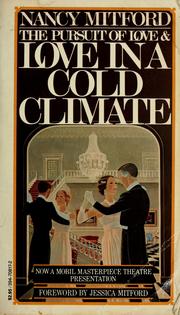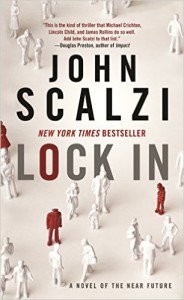Over the course of about 18 months, in 2014-2015, a high class escort sent out a series of emails over Tiny Letter, in which she discussed her work, boyfriend, love affairs, and friends. The bulk of those emails have now been assembled together and published for the first time as a memoir.
Continue reading Prostitute Laundry
Before reading this book, I spent about a month reading nothing but novels written by women in the first half of the twentieth century. Most of them were mystery novels. Ninety per cent of the action took place in drawing rooms. The ritual of tea was interrupted for no possible emergency. There were some dead bodies scattered about, but the more serious problem was the difficulty of getting decent servants. It was heaven.
My poor, fragile brain was not prepared for The North Water. Continue reading The North Water

It occurs to me that some people might not know who the Mitford sisters were. Do you know who the Mitford sisters were? They were the daughters of a minor peer, raised partly in London and partly in Oxfordshire, and were notable for their eccentricities, which is what you call it when rich white people do things that would be unacceptable if they were poor or black. Nancy, the eldest, had a string of husbands and lovers before settling down in Paris with a man she refused to marry but lived very happily with (scandalous at the time). Jessica eloped with an aristocratic communist, and then, much worse, with an American communist. Unity and Diana both got into fascism in a big way; Unity shot herself in the head when Britain declared war on Germany (she survived, but later died essentially due to complications arising from the bullet that was STILL IN HER HEAD). Diana’s second wedding took place in Joseph Goebbels’s drawing room. Deborah towed the line a bit more by marrying well, and ended up managing Chatsworth house in her capacity as Duchess of Devonshire. Pamela was mostly into animals, bless her, though that goes for all of them: during Unity’s debutante season, she frequently showed up at balls and parties draped in her pet grass-snake, Enid.
Continue reading The Pursuit of Love & Love in a Cold Climate
The year is 1924, and Jane Fairchild, a housemaid in a country house, is engaged in a long-running affair with the son of a nearby estate. Paul Sheringham, too young to have been killed in the war along with all of the other local young men, is due to marry another woman in a few short weeks, and this novel charts their last day – really only a few hours – together.
Continue reading Mothering Sunday
As a person who has had a love of Agatha Christie inculcated in me from the years of my earliest literacy by older female relatives on both sides of my family, I am the first to admit that I am less than conversant in other great mystery novelists of the same period. It took me until my 30s to discover John Dickson Carr, for example – arguably the greatest of the so-called “locked room mystery” writers. My family bookshelves just didn’t deign to notice the existence of any detectives that weren’t Miss Marple, Hercule Poirot, or (grudgingly) Tommy and Tuppence Beresford*. No surprises, then, that Patricia Wentworth has only just appeared on the horizon of my literary radar**.
Continue reading Grey Mask ff
Maybe you recall, coming up for ten years ago, the film version of the first book in this series, Northern Lights? Except the movie was called The Golden Compass, after the American version of the book, because Americans fall into a funk of existential dread if they don’t get to name everything themselves. It starred Nicole Kidman and Daniel Craig? Yeah, don’t watch that. It was made when steampunk was still a thing. It has the worst child acting I think I’ve ever seen, and I was in a community theatre production of Annie. But the books. The books are…well.
Continue reading His Dark Materials
In the not-too-distant future, a flu-like epidemic has swept the globe. Of those who aren’t killed outright, a small but significant proportion develop a neurological complication that renders them conscious but paralysed – the Lock Ins of the title. Referred to as “Hadens” after a former (fictional) FLOTUS, an early contractor of the syndrome, they are implanted with complex nano-technology and able to interact with the outside world through the use of cybernetic prostheses. So yeah. Mind-controlled robots. A minuscule number of individuals are also left with their neurological structures affected in such a way that they can interface with Hadens, acting for short periods as their proxies (known as “integrators”).
Continue reading Lock In
It’s no secret that I’m a massive fan of Fforde’s The Eyre Affair and its sequels, but for some reason I had never ventured into any of his other novels. Fforde did a live chat with the Guardian recently, which reminded me of this fact, and prompted me to give this series, “Nursery Crimes”, a go.
Continue reading The Big Over Easy and The Fourth Bear
Did you know there were female Dutch Old Masters? I didn’t. But apparently there were, though they were mostly relegated to painting still lifes (lives?), which were considered appropriate subject-matter for a person of femaleness. Also, due to the usual kinds of infuriating assumptions, many of their works have, over the years, been attributed to their male contemporaries, because Of Course. So if nothing else, I can thank this book for giving me some new knowledge.
Continue reading The Last Painting of Sara de Vos
Lucien (Lucy) Minor is a teenager living somewhere in proto-industrial Europe. Spurned in love and in search of adventure, he takes a post as undermajordomo (that is, assistant to the majordomo, or chief steward) in the gloomy Castle Von Aux. (What happened to the previous undermajordomo, you ask? No one seems to want to talk about that.)
Continue reading Undermajordomo Minor









